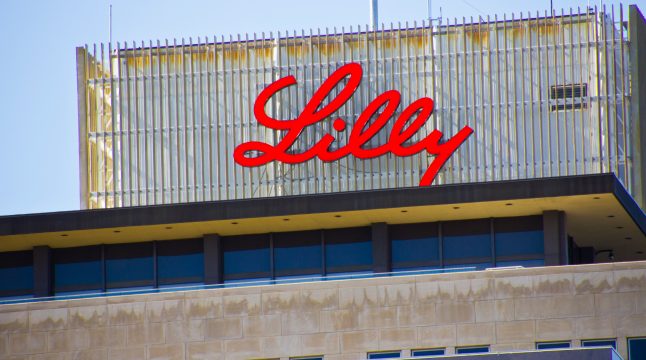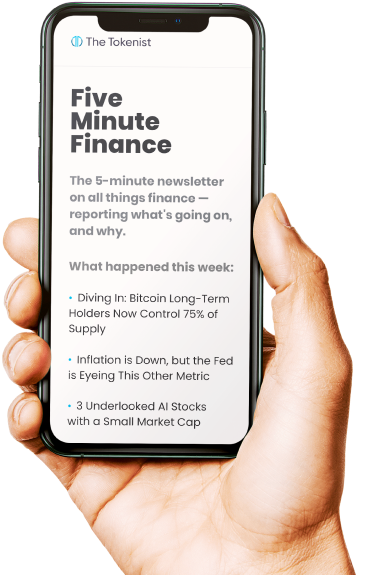
Why are Eli Lilly’s Shares Crashing Today Despite Strong Earnings?
Eli Lilly (NYSE: LLY) delivered another quarter of exceptional financial performance with 38% revenue growth driven by robust Zepbound and Mounjaro sales, yet shares plummeted as much as 14.53% in early trading. The pharmaceutical giant’s stock was trading at $637.91 at the time of writing, down $108.46 from the previous day’s close of $746.37, despite raising full-year guidance and beating earnings expectations.
The dramatic selloff was triggered by disappointing results from the company’s highly anticipated oral weight-loss pill orforglipron, which showed less efficacy than investors had hoped for in its pivotal Phase 3 trial.
Lilly’s Strong Earnings Performance Overshadowed by Pipeline Disappointment
Lilly reported impressive second-quarter results with revenue reaching $15.56 billion, representing a 38% increase year-over-year, driven primarily by strong demand for diabetes and obesity treatments Zepbound and Mounjaro. The company’s earnings per share jumped 92% to $6.29 on a reported basis, while non-GAAP EPS increased 61% to $6.31. Key products revenue grew to $10.40 billion, with Mounjaro generating $5.20 billion (up 68%) and Zepbound contributing $3.38 billion (up 172%).
Based on this strong performance, Lilly raised its full-year revenue guidance by $1.5 billion to a range of $60-62 billion, while increasing reported EPS guidance to $20.85-$22.10 and non-GAAP EPS guidance to $21.75-$23.00. The company’s gross margin expanded to 84.3% of revenue, up 3.5 percentage points from the prior year, driven by improved production costs and favorable product mix. Research and development expenses increased 23% to $3.34 billion, reflecting continued investment in the company’s pipeline.
Despite these robust financials, investors focused on the disappointing results from orforglipron, the company’s experimental oral weight-loss pill that many viewed as a potential game-changer in the obesity market. The stock’s decline demonstrates how pipeline setbacks can overshadow even strong operational performance in the pharmaceutical industry. Lilly’s market capitalization dropped by approximately $98 billion in a single trading session, highlighting the market’s sensitivity to clinical trial outcomes.
Join our Telegram group and never miss a breaking digital asset story.
Weight Loss Pill Trial Results Fall Short of Market Expectations
The Phase 3 ATTAIN-1 trial results for orforglipron showed patients achieved an average weight loss of 12.4% (27.3 pounds) over 72 weeks, which fell at the lower end of market expectations despite being statistically significant. While the drug met its primary endpoint and all key secondary endpoints, with 59.6% of participants losing at least 10% of body weight and 39.6% losing 15% or more, investors had hoped for more impressive efficacy data. The results, though clinically meaningful, were viewed as less competitive compared to existing injectable GLP-1 treatments.
Market analysts had positioned orforglipron as a potential blockbuster drug that could revolutionize obesity treatment by offering a convenient oral alternative to current injectable medications. Morgan Stanley analysts previously estimated the drug could generate up to $40 billion in annual sales by 2033 under a bull-case scenario for both obesity and diabetes indications.
The underwhelming trial data significantly dampened these optimistic projections and raised questions about the drug’s competitive positioning.
The disappointing results immediately benefited Lilly’s main rival Novo Nordisk, whose shares surged 12% as investors viewed the data as reducing competitive pressure on their Wegovy and Ozempic franchises. The safety profile of orforglipron was consistent with other GLP-1 receptor agonists, with gastrointestinal side effects being the most common adverse events. Treatment discontinuation rates ranged from 5.1% to 10.3% across different doses, compared to 2.6% for placebo.
Despite the market reaction, Lilly remains committed to advancing orforglipron through the regulatory process, planning to submit the drug for approval by year-end and making substantial manufacturing investments to meet anticipated demand.
The company emphasized that orforglipron still represents a significant advancement as a once-daily oral therapy that could support early intervention and long-term obesity management, though the commercial opportunity may be more limited than originally anticipated.
Eli Lilly’s Stock Suffers One of Its Worst Single-Day Declines
Eli Lilly’s stock experienced one of its worst single-day declines in recent memory, falling from a previous close of $746.37 to $637.91, marking a 14.53% drop as of market open on August 7, 2025. The dramatic selloff occurred despite the company’s strong financial performance and raised guidance, highlighting how clinical trial results can override fundamental business metrics in pharmaceutical investing.
The stock has been under pressure year-to-date, with a negative 17.02% return compared to the S&P 500’s positive 7.86% performance.
Looking at longer-term performance, Lilly has still delivered impressive returns for shareholders with a 3-year gain of 117.41% and a remarkable 5-year return of 342.54%, both significantly outpacing the broader market.
The company maintains a substantial market capitalization of approximately $573 billion, making it one of the largest pharmaceutical companies globally. Key valuation metrics include a trailing P/E ratio of 51.80, forward P/E of 34.13, and a PEG ratio of 1.14, suggesting the stock trades at a premium relative to growth expectations.
Analyst sentiment remains mixed following the orforglipron results, with price targets ranging from a low of $650 to a high of $1,190, and an average target of $956.67. The current stock price represents a significant discount to the average analyst target, potentially presenting a buying opportunity for investors who believe the market has overreacted to the clinical trial results.
Trading volume was exceptionally high at over 12.4 million shares, well above the average daily volume of 3.7 million shares, indicating intense investor interest and repositioning.
Disclaimer: The author does not hold or have a position in any securities discussed in the article. All stock prices were quoted at the time of writing.




